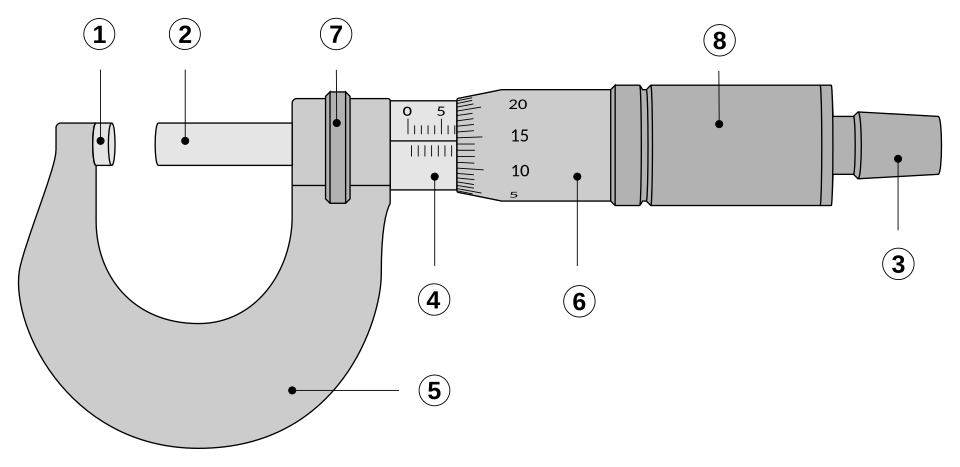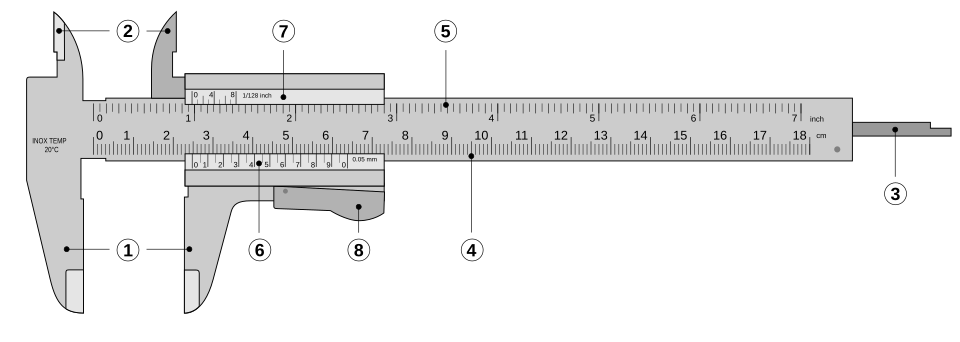OCR Specification focus:
‘Correctly cite sources of information and competently use a wide range of experimental instruments, equipment, and techniques as required.’
Effective scientific practice depends on accurate referencing and competent use of instruments. Students must demonstrate professionalism in citing reliable sources and applying appropriate experimental techniques confidently and safely.
Referencing in Scientific Work
Referencing ensures academic honesty, traceability, and reliability in physics investigations. It allows others to verify the information used and to build upon prior work with confidence.
The Purpose of Referencing
Proper referencing is essential for:
Giving credit to original authors and researchers.
Allowing readers to trace sources for verification or further study.
Avoiding plagiarism, which is the unethical use of others’ work without attribution.
Demonstrating engagement with reliable scientific sources such as textbooks, peer-reviewed journals, and reputable databases.
Common Referencing Styles in Physics
Physics reports typically follow one of the following systems:
Harvard (author–date) – uses the author’s surname and publication year in the text, e.g. (Young, 2016).
Numeric (Vancouver) – assigns numbers to sources in the order they appear, e.g. [1].
APA (American Psychological Association) – similar to Harvard but with strict formatting rules for punctuation and italics.
Students should use a consistent format throughout all written and digital reports.
Components of a Reference
Every reference should include:
Author(s) – surname and initials.
Publication year – in parentheses.
Title – italicised or underlined for emphasis.
Source – such as journal name, publisher, or website.
Access date and URL – if referencing online material.
In-text Citations and Reference Lists
In scientific reporting:
In-text citations identify where information originates within a paragraph.
A reference list at the end of a report gives full details of every cited source, arranged alphabetically or numerically depending on the chosen style.
Evaluating Reliable Sources
Students must critically assess the reliability of sources:
Prefer peer-reviewed journals and academic textbooks.
Avoid unverified websites or user-edited platforms such as open forums.
Cross-check data or equations between multiple trusted publications.
Use official data repositories, e.g. NPL (National Physical Laboratory) or NASA databases, when referencing constants or measurements.
Plagiarism and Academic Integrity
Plagiarism undermines credibility and is prohibited in scientific practice.
Plagiarism: The act of presenting someone else’s work, data, or ideas as one’s own without proper attribution.
Students must paraphrase appropriately, acknowledge all borrowed material, and quote directly only when essential to preserve meaning.
Use of Experimental Instruments
Competence in using instruments is fundamental to accurate data collection and interpretation in physics. Understanding both the correct procedures and limitations of apparatus ensures valid results.
Classification of Instruments
Scientific instruments are generally classified as:
Analogue instruments – display values on a continuous scale (e.g. thermometers, ammeters).
Digital instruments – provide readings as discrete numerical values (e.g. digital multimeters, electronic balances).
Each type has specific advantages and sources of uncertainty that must be managed carefully.
Principles of Instrument Use
Students should:
Select instruments with appropriate precision and range for the measurement task.
Check calibration before and after use to ensure reliability.
Record uncertainties for every measurement taken.
Handle delicate instruments, such as micrometers or spectrometers, with controlled and repeatable technique.

Diagram of a micrometer screw gauge indicating the anvil, spindle, sleeve, and thimble scale. It illustrates how the rotational scale yields fine resolution for small distances and where to read uncertainty from the least division. The figure shows a sample reading; this extra numeric example is acceptable context for scale interpretation. Source.
Calibration and Zero Error
Calibration compares an instrument’s reading with a known standard to identify systematic error.
Calibration: The process of adjusting or verifying an instrument’s readings against a recognised standard to ensure accuracy.
Zero error occurs when an instrument gives a non-zero reading while measuring nothing. This must be corrected during data analysis.
Accuracy, Precision, and Uncertainty
When using instruments:
Accuracy describes how close a measurement is to the true value.
Precision indicates the repeatability of readings.
Uncertainty quantifies the doubt associated with any measurement result.
EQUATION
—-----------------------------------------------------------------
Percentage Uncertainty (%) = (Absolute Uncertainty / Measured Value) × 100
Absolute Uncertainty = Half the range of repeated measurements or the smallest scale division.
Measured Value = Quantity recorded from the instrument (appropriate SI unit).
—-----------------------------------------------------------------
These values help determine whether data are reliable and consistent with theoretical predictions.
Safe and Competent Use of Equipment
Safety and precision go hand in hand:
Inspect apparatus for faults before operation.
Use protective eyewear when working with lasers or radiation sources.
Follow manufacturer instructions for high-voltage or vacuum equipment.
Secure fragile instruments firmly to benches to prevent vibration or movement.
Common Laboratory Instruments in A-Level Physics
Students are expected to competently operate:
Vernier calipers and micrometers for small distance measurements.

Labeled diagram of a vernier caliper, showing the main scale, vernier scale, and jaws used for internal and external measurements. The image clarifies where readings are taken and how the vernier enables interpolation between divisions. It contains no extra content beyond what is required for OCR practical competence. Source.
Balances for determining mass to high precision.
Thermocouples or digital thermometers for temperature readings.
Light gates and timers for motion experiments.
Oscilloscopes for analysing electrical signals.
Spectrometers for optical wavelength measurement.
Data loggers and sensors for automated data capture and analysis.
Recording and Maintaining Instrument Data
Good practice includes:
Keeping detailed lab notebooks with dates, instrument identifiers, and calibration data.
Recording environmental conditions (temperature, pressure, humidity) that could influence readings.
Using ICT tools or spreadsheet software to log and analyse data efficiently.
Backing up electronic files regularly to prevent data loss.
Integration of Referencing and Instrument Use
Competent physicists must link their practical data to established scientific knowledge. This involves:
Referencing instrument manuals or calibration standards when citing measurement methods.
Using reference sources such as the NIST Reference Data or CODATA constants when comparing measured results.
Citing experimental techniques accurately, e.g. “measurements were obtained using a calibrated digital oscilloscope (model specified).”
Final Emphasis
Mastering referencing and instrument use demonstrates a student’s readiness for advanced scientific work. It reflects both intellectual integrity and technical proficiency, core expectations of the OCR A-Level Physics practical endorsement.
FAQ
When referencing your own data, cite it as an unpublished source within your report. Include the experiment title, date, and institution or laboratory. For example: “Cortes, E. (2025). Measurement of spring constant using Hooke’s law apparatus, TutorChase Laboratory (unpublished data).”
If the data was gathered collaboratively, list all contributors in the reference. This demonstrates transparency and allows others to trace the origin of your results, just as they would for published material.
Consider these checks:
Look for author credentials (e.g. academic or institutional affiliation).
Prefer sites ending in .edu, .ac.uk, .gov, or .org.
Verify that data is peer-reviewed or references primary research.
Check publication date for relevance.
Avoid sites with advertisements or sensational language.
If unsure, cross-reference information with a textbook or scientific database (e.g. NPL, NASA, or Physics Today).
Instrument drift occurs when readings change over time without any alteration in the measured quantity.
To manage this:
Allow equipment to warm up before taking readings (especially electronic instruments).
Take baseline readings at intervals to check stability.
Recalibrate during long experiments.
Record drift trends in your data log so corrections can be applied later.
Regular maintenance and calibration certificates help ensure continued accuracy across multiple experiments.
Include manufacturer and model details when:
The specific instrument might affect precision or data interpretation.
The apparatus has unique features, such as a digital filter or non-standard scale.
You are comparing results from different models or brands.
For example: “Measurements were taken using a Keysight U1242C digital multimeter (accuracy ±0.09%).”
This provides traceability and allows others to replicate your procedure accurately.
For digital instruments:
The uncertainty is usually equal to the smallest unit displayed (the last digit on the screen).
If readings fluctuate, take several measurements and record the range to estimate uncertainty.
Always state units and number of significant figures consistently.
Example: A digital balance showing 0.001 g increments would have an uncertainty of ±0.001 g, unless the manufacturer specifies otherwise.
Quoting these correctly shows awareness of precision limits and supports reliable error analysis.
Practice Questions
Question 1 (2 marks)
A student measures the thickness of a wire using a micrometer screw gauge. Explain two steps the student should take to ensure their measurement is accurate and reliable.
Mark Scheme:
(1 mark) Check for zero error before taking readings and apply a correction if necessary.
(1 mark) Take multiple readings at different points along the wire and calculate the mean value to reduce random error.
Question 2 (5 marks)
A student is investigating the extension of a spring and uses a ruler, stopwatch, and digital balance. The student records data and cites an online article that provided the theoretical relationship between force and extension but fails to reference it properly.
(a) State two possible instrumental errors that could occur in this experiment and how they could be minimised. (2 marks)
(b) Explain why it is important to correctly reference the online article in the student’s report. (2 marks)
(c) State one method the student could use to demonstrate good scientific practice when recording and reporting data. (1 mark)
Mark Scheme:
(a)
(1 mark) Parallax error when reading the ruler – minimised by taking readings at eye level perpendicular to the scale.
(1 mark) Calibration error in the balance or ruler – minimised by checking the zero before and after use or comparing with a standard reference instrument.
(b)
(1 mark) Referencing allows others to trace and verify the source of information.
(1 mark) Proper citation prevents plagiarism and demonstrates academic integrity.
(c)
(1 mark) Maintain a clear and accurate lab notebook or digital record including instrument details, uncertainties, and environmental conditions.

